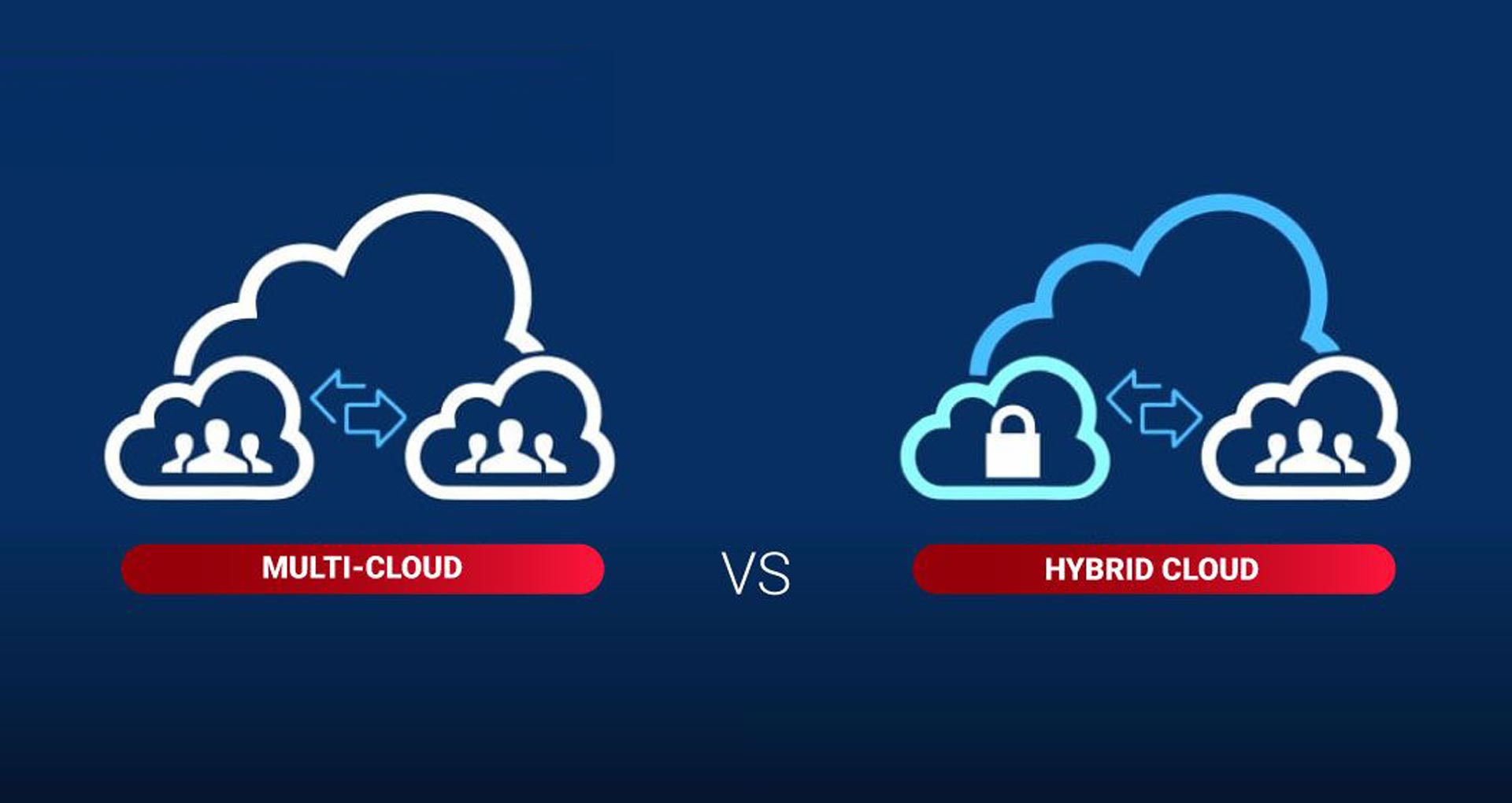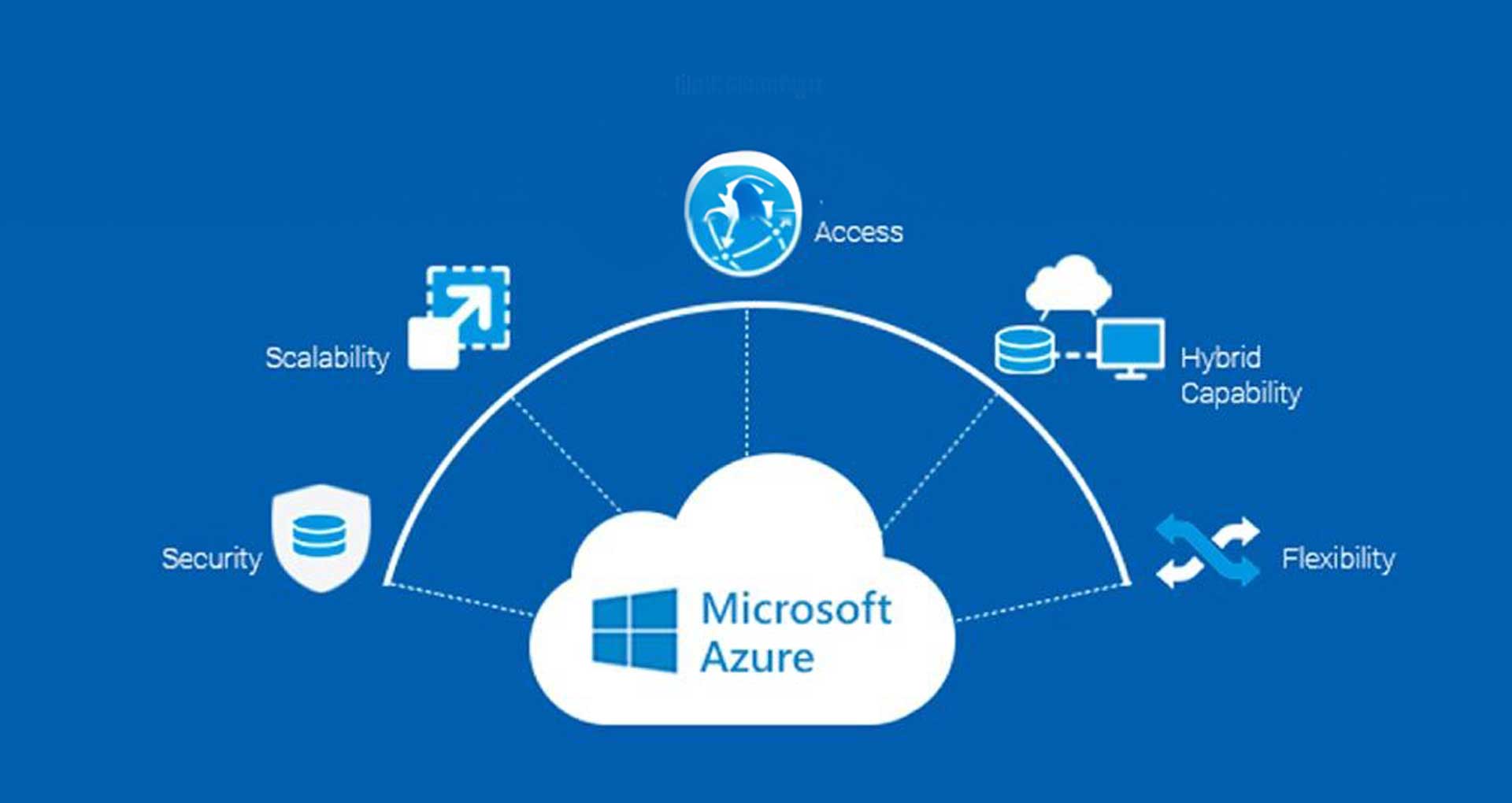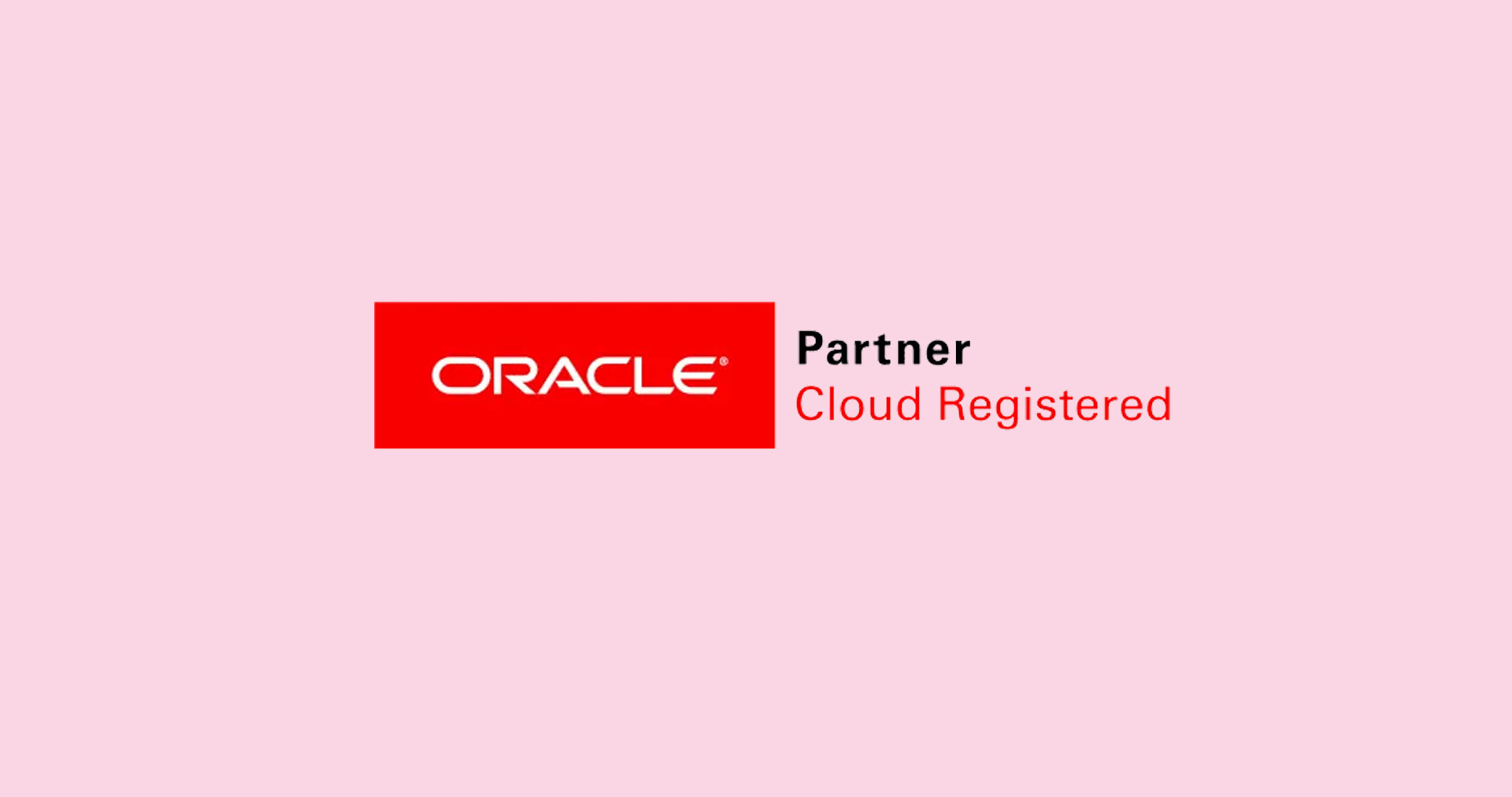In today’s code-to-cloud world, applications and business services are no longer built around a singular location. Thus, you need a connected cloud services ecosystem and developer-ready infrastructure to simplify business continuity.
Product owners sometimes struggle to choose between multi-cloud or hybrid cloud and are often left wondering which one is the right cloud strategy for them.
Recently, Flexra conducted a cloud computing report in 2023[1] that explored the thinking of 750 IT professionals and executive leaders to understand year-over-year changes and identify upcoming trends. It has been identified that 87% of respondents reported having a multi-cloud strategy. While 72% adopted the hybrid cloud strategy approach. But choosing the right cloud strategy is not simple.
Multi-cloud environment lets organizations take advantage of cost-efficiency and the latest cloud technology from leading public cloud providers like AWS, GCP, Azure, and others.
Meanwhile, hybrid cloud deployment gives organizations great control over data and extends on-premises infrastructure. So, why would a business choose hybrid cloud over multi-cloud? But before you compare multi-cloud and hybrid clouds, it is important to understand the difference between private and public clouds.
Public Cloud vs Private Cloud
A public cloud is a type of cloud computing environment where a third-party services provider offers computing resources on a shared basis. On the other hand, a private cloud is a cloud computing environment dedicated to a single organization, and sometimes it is also referred to as data center.
Private clouds are typically used when public clouds won’t meet the needs of the business. For example, in cases where a public cloud isn’t secure enough for mission-critical workloads or raises security or regulatory compliance concerns.
Now that we understand the difference between private and public clouds, comparing multi-cloud and hybrid clouds is easier. The decision to choose between hybrid vs multi-cloud must be in sync with the broader IT roadmap of your organization.
Therefore, knowing the unique strengths and challenges is important for choosing the best-fit cloud solution. So, let’s compare multi-cloud vs hybrid cloud and understand why you should choose one over the other. The blog explores the pros and cons of multi-cloud and hybrid-cloud models and the use cases for each. Let’s get started.
What is Multi-Cloud?
A multi-cloud uses two or more public cloud services from different cloud vendors. It helps avoid single vendor lock-in and gives the flexibility to pick best-of-breed cloud solutions from multiple cloud providers.
Pros of Multi-Cloud Strategy
Multi-cloud offers several advantages that help increase your organization’s IT agility and flexibility. Let’s look at some of the most common benefits of adopting a multi-cloud strategy.
Reliability and Resilience
Multi-cloud helps boost business resilience as you can avail of cloud services from other providers and avoid downtime that may occur if there is an outage in a particular cloud platform. According to a study, 90% of organizations agree[2] that a multi-cloud strategy helps achieve business goals.
Implement Data Residency Compliance
Nations often have local laws and regulations under data residency that require enterprises to reside their data in a particular location. Multi-cloud allows enterprises to choose from multiple IaaS vendors across countries with data center and regional availability zones to meet those compliance requirements. This also ensures low latency, proximity to target audiences across different geographies, and compliance with data sovereignty regulations.
Cost-efficient
A multi-cloud environment helps lower[3] your infrastructure, and IT costs regardless of industry. It also allows for faster scalability. It enables organizations to switch between different cloud providers based on their current demand and market trends. Thus, it enables businesses to easily migrate to the cloud, allocate resources and optimize costs efficiently.
Cons of Multi-Cloud Strategy
Architectural Complexity
Managing multiple cloud platforms requires specialized skills, tools, and resources. Further, each cloud service provider has its own unique terminology, APIs, and services, which, if not managed well, can lead to architectural complexity. Adding to the architectural complexity is the shortage of skilled talent. Moreover, not only is it hard to find enough skilled talent, but they must also be up to date with the best practices for backups and security.
Integrating Software Environments
The presence of multiple cloud platforms also increases the risks of compatibility issues among cloud components. Integrating multiple cloud platforms can be complex and require additional efforts because each cloud provider uses different APIs and architecture.
Maintaining Consistent Visibility
Maintaining visibility and control across all cloud environments is a major challenge, given the difference in data governance and security across multi-cloud environments. In fact, the absence of centralized visibility of cloud security and activity can often expose the enterprise to potential security pitfalls, data breaches, and cyber-attacks.
If you need assistance to simplify your multi-cloud operations, optimize performance, and avoid vend lock-in, cloud experts at Rishabh Software can be your one-stop solution. Our cloud experts have in-depth knowledge and extensive experience in assisting our development partners to reduce their multi-cloud vulnerability and prevent unplanned outages.
What is Hybrid Cloud?
A hybrid cloud environment is the combination of both the public cloud and the private cloud. Companies choose hybrid cloud strategy to lower costs, mitigate risks and extend on-premise IT infrastructure to accelerate the digital transformation journey.
Pros of Hybrid-Cloud Strategy
Scalability
Scaling private clouds can be expensive as it involves significant investment in purchasing and expanding your infrastructure. Earlier businesses had to postpone scaling until they arranged sufficient funds. With the addition of the public cloud, adding more resources and servers to scale to meet the need and demand for IT services becomes easier.
Improved Security
In a hybrid cloud environment, you can quickly move critical workloads to public clouds from the private cloud while restricting access to sensitive data. Thus, it gives greater control over data and makes it easier to implement encryption, access controls, and orchestration to reduce potential threats like data breaches or cyber-attacks.
Meet Regulatory Requirements
A hybrid cloud environment enables you to securely keep private data and applications in the private cloud that adheres to the mandatory security and compliance standards. Hybrid cloud infrastructure thus helps enterprises comply with industry-specific regulatory standards such as HIPAA, PCI-DSS, GDPR, and others.
Cons of Hybrid-Cloud Strategy
A hybrid cloud does offer multi-fold benefits, but it may not be the right fit for every organization. Here are some disadvantages of adopting the hybrid cloud strategy:
Complexity
A hybrid cloud environment can be complex to manage because on-premises infrastructure and public cloud may not always be compatible. This will likely make optimizing data transmission challenging.
Security
Given the complex mix of systems, applications, and processes, it can be challenging to have constant visibility and effectively ensure network security. If not secured and managed, it can be vulnerable to data breaches. Thus, establishing a centralized network security architecture that covers both private and public clouds and provides better security across the network is critical to success.
Data Privacy
Since data can be accessed from private and public clouds without stringent security measures, it leaves the organization vulnerable to data breaches and unauthorized access. Enterprises find it particularly challenging to ensure data privacy and industry-specific compliance. Implementing a multi-layered security approach that includes IAM, encryption, and security audits can help overcome the challenge.
Key Difference Between Multi-Cloud and Hybrid Cloud

Architecture
The multi-cloud model combines two or more public cloud services offered by different cloud providers. Major multi-cloud architecture designs include cloudification, relocation, refactoring, rebinding, and multi-application modernization.
A hybrid cloud environment combines a mixture of two or more different types of cloud environments. There are two major hybrid cloud architecture designs: homogenous and heterogenous.
Flexibility
In a multi-cloud environment, you can choose whichever cloud service you need from multiple public cloud providers. This helps avoid vendor lock-in, optimize costs, and choose the best-of-breed cloud service for each workload. Moreover, since the users are not limited to a single cloud vendor, you can scale instantly when needed by simply selecting a preferred cloud vendor for a particular cloud service. For instance, an organization might use.
- AWS for frontend
- Azure for data analytics
- Google Cloud for machine learning
A hybrid cloud architecture provides the advantages of private and public clouds. You can leverage the flexibility to keep sensitive and valuable business data on the private cloud while running certain applications on the public cloud. This helps to balance cost and security concerns and avoid potential threats to business data. For example, and hybrid cloud user may use the following:
- Private cloud for greater access control, security of data, and mission-critical applications
- Public cloud for testing and development
Security
Multi-cloud solutions enable you to select from different public cloud providers and leverage cutting-edge security features. It allows configuring secure data transfer between different cloud environments easily by using (Identity and Access Management) IAM role-based access controls, encryption, and other cloud security best practices.
Since there is no over-reliance on one cloud vendor to supply cloud storage and applications, it eliminates the risks from a single point of failure.
A hybrid environment, on the other hand, provides even greater control over the security of data and applications by securing them in private clouds. It allows you to configure additional layers of security, such as automated data redundancy, high availability, and disaster recovery, to secure valuable data.
Cost
The cloud vendor in a multi-cloud environment handles most of the responsibilities, from managing and maintaining everything from the data center, hardware to scaling and delivery. So not only do you benefit from choosing the best mix of cloud services that offer pricing and performance, but you also incur less operational overheads. That is why multi-cloud is a preferred route for organizations focused on growth.
A hybrid environment allows an enterprise to benefit from cost savings and scalability by running specific apps on the public cloud. It helps reduce IT costs as they can securely store sensitive data and business-critical apps on the private cloud.
Complexity
Multi-cloud architecture requires organizations to manage multiple cloud environment tools, technologies, and APIs. This can increase the complexity and demands planning at the outset to assign workloads that best match the strength of each cloud. It also requires centralizing management to have complete visibility into the technology stack running in multiple clouds.
A hybrid cloud environment is unique as it allows to use existing on-premises investment while providing infrastructure for modernization. Hybrid cloud success, therefore, depends on thorough planning and orchestration strategy to integrate, configure, and manage private and public cloud components. Effective orchestration between on-premises, private, and public cloud components enables the organization to scale cloud resources and connect business-critical applications to maintain security and compliance without the burden of complexity.
Can a Hybrid Cloud Be a Multi-Cloud?
Yes! A hybrid cloud can technically be a multi-cloud when it combines two or more public cloud services with a private cloud. Some organizations may not want to rely solely on cloud resources; in such instances, the organization chooses a cloud architecture that operates as a combination of multiple public cloud environments and on-premises IT infrastructure to leverage the benefits of both hybrid and multi-cloud. A hybrid cloud can thus be multi-cloud if more than one public cloud is used.
Use Cases of Multi-cloud vs Hybrid Cloud
Multi-cloud Use Cases
Low-Cost Alternative to Cloud Backup
A popular use case of multi-cloud storage services is efficient data transfer and storage capabilities. Thus, making it a low-cost, flexible, and safe alternative for cloud backups. It is cost-efficient due to on-demand scalability and performance, and it is also possible to harness multi-cloud storage for long-term retention and archiving of critical business data.
Disaster Recovery
Disaster recovery is one of the most common reasons enterprises choose a multi-cloud strategy. Data is one of the most critical assets, and organizations find the affordable cost structure that a multi-cloud data repository provides appealing. Cloud-based Disaster Recovery (Cloud DR) has become even more practical and cost-efficient with the rising popularity of cloud-ready data protection. So rather than maintaining a separate DR site with infrastructure that may only get used when there is a disruption or disaster, simply moving data to the cloud helps save capital expenditure.
Real-life Use Case of Multi-Cloud: Spotify
Spotify, the popular music streaming service, uses multi-cloud architecture to meet its demand for scalability and performance. Spotify leverages the following cloud platforms:
- Google Cloud – To manage Data Analytics and Machine Learning
- Amazon Web Services – Content delivery and streaming service
- Microsoft Azure – Backend service and integration with the Microsoft ecosystem
The multi-cloud environment enables Spotify to stay resilient and minimize the potential of an outage as it can quickly choose another cloud platform to shift workloads.
Hybrid Cloud Use Cases
On-Premises Private Cloud to Host Sensitive Data
A popular use case of a hybrid cloud would be an organization that combines on-premises IT infrastructure with a public cloud. It will use the public cloud for less critical workloads or load balancing during peak season. While it will host their sensitive data and business applications on their on-premises servers. It allows the organization to optimize on-premises and cloud environments to scale on demand and meet business goals.
Cloud Bursting
In cloud bursting, the workload that primarily operates on the on-premises infrastructure is spilled over to the public cloud to utilize the cloud computing resources to meet the capacity demands. It is usually temporary due to seasonal business cycles when capacity demand increases. Two common reasons for cloud bursting are bursting for cloud resources and bursting for storage. It is a cost-effective way to accommodate the workload when a demand surge or spike occurs due to a seasonal cycle.
Real-life Use Case of Hybrid-Cloud: Netflix
The popular video streaming service Netflix uses hybrid cloud storage solutions for scalability, business continuity, and enhanced security. It combines:
- AWS – Ideal for all computing[4] and storage needs, including databases, recommendation engines and video transcoding.
- On-Premises Data Centers – For content creation and data processing.
Hybrid Cloud vs. Multi-Cloud: Choose the Right Cloud Computing Option for Your Business?
Cost
Multi-cloud offers better cost-savings because public clouds have relatively fewer overheads as vendors are responsible for maintaining and operating the cloud. Secondly, since you can hand-pick particular cloud services from multiple cloud vendors for each workload, you can negotiate better prices and reduce overall costs.
In a hybrid model, businesses must invest in on-premises infrastructure and staff. Therefore, hybrid clouds have a higher total cost of ownership and operating overheads, particularly when scaling operations.
Control and Access
The hybrid cloud environment suits businesses that want strict data control, security, and access management. Hence, hybrid clouds are preferred for enterprises that host sensitive data or are involved in highly regulated industries such as healthcare or fintech with strict data storage. Multi-cloud deployment, on the other hand, is suitable for organizations seeking wider geographic coverage and cost efficiency.
Integration and Reliability
Multi-cloud deployment may be more appropriate if your organization requires smooth integration between different public cloud services and heavily banks on third-party providers. Hybrid cloud is ideal for organizations that want quicker access to data and applications by hosting sensitive and on-premises data.
How Rishabh Software Can Help You Make the Most of Multi-Cloud and Hybrid Cloud?
At Rishabh Software, we are well-versed with multi-cloud as well as hybrid-cloud platforms and have successfully worked with the shapes and sizes of businesses to develop their enterprise cloud strategy to design, develop and distribute complex ecosystems. As a leading cloud application development company and certified AWS and Microsoft Solutions Partner, we offer high-level expertise to drive your businesses forward.
Businesses worldwide trust our cloud consulting services to innovate, scale and manage their IT infrastructure securely, efficiently, and confidently.
Conclusion
Businesses today need to adapt with greater flexibility and speed. Many organizations focus on multi-cloud for speed, scale, and performance to hand-pick the best-fit cloud solution regardless of the stage in their cloud journey. But using multiple clouds also breeds complexity.
The hybrid cloud model, on the other hand, leverages public cloud to help organizations extend on-premise IT infrastructure’s capabilities to meet compliance, security, and on-demand scalability.
You must weigh your unique business needs and risk tolerance to narrow your choice between multi-cloud vs hybrid cloud. The best-fit cloud service optimizes your resources, protects your data, and is instrumental to your organization’s larger IT strategy.
Still, confused between hybrid cloud vs multi-cloud infrastructure?
Connect with us today to navigate the complex world of hybrid cloud and multi-cloud environments with our cloud experts. We will help to determine the best cloud infrastructure based on various parameters like security, flexibility, cost, control, and integration.
FAQs
Q: What is Hybrid Multi-Cloud?
A: A hybrid multi-cloud uses a mixture of on-premises and/or private/public clouds from multiple providers, effectively being hybrid and multi-cloud. It helps the cloud environment become more agile, scalable, efficient, and cost-effective. However, managing and integrating multiple cloud environments requires significant planning and centralized management.
Q: What Does the Future Hold for Multi-Cloud and Hybrid Cloud?
A: In the near future, hybrid multi-clouds that are a combination of public and private clouds will likely see the strongest growth. It allows an organization to benefit from the scalability and cost-effectiveness of public clouds while also taking advantage of private clouds for greater control of sensitive data.
Edge computing is another fast-emerging technology that enables real-time data processing and reduces latency to enhance data security and boost performance.
Q: What are some of the popular multi-cloud providers?
A: Multi-cloud environment typically involves a mixture of major public cloud providers. These include Amazon Web Services (AWS), Microsoft Azure, Google Cloud Platform (GCP), Oracle Cloud, IBM Cloud, Tencent Cloud, Alibaba Cloud, Digital Ocean, and others.
Footnotes:
1. https://www.flexera.com/blog/cloud/cloud-computing-trends-flexera-2023-state-of-the-cloud-report/
2. https://www.hashicorp.com/state-of-the-cloud
3. https://www.cio.com/article/462834/cost-still-biggest-driver-for-multi-cloud-study-finds.html
4. https://aws.amazon.com/solutions/case-studies/innovators/netflix/











 30 Min
30 Min


